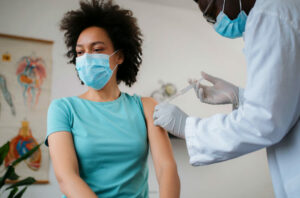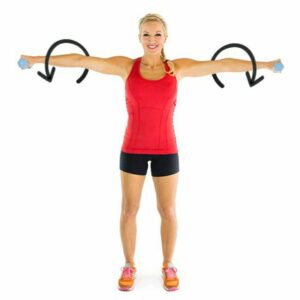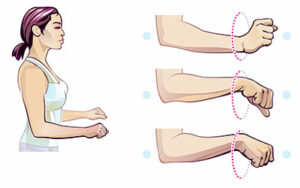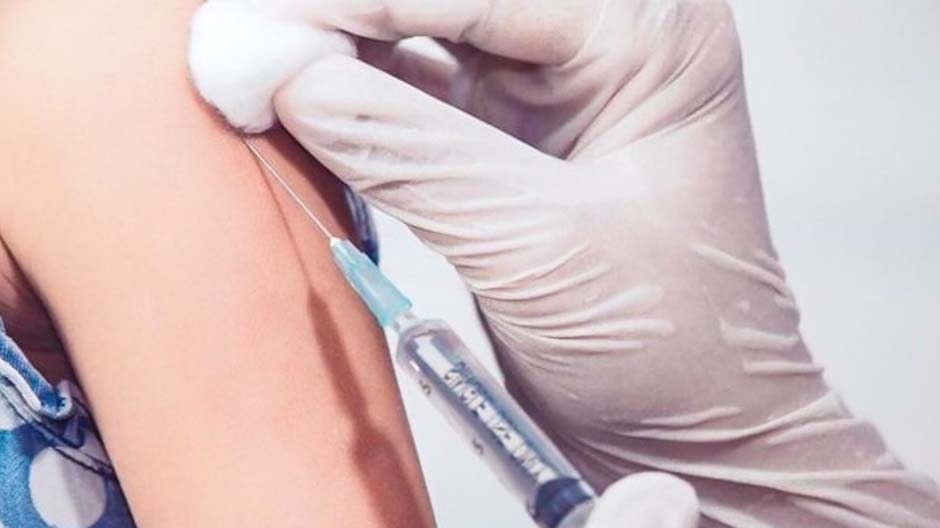If you’ve just had a vaccine, you may be experiencing some arm soreness. This is perfectly normal and usually goes away after a day or two. However, if the soreness is severe or lasts more than a few days, then you may need to take some steps to prevent it from happening again. In this blog post, we will discuss some tips on how to prevent arm soreness after your vaccination.
Contents
What Is Soreness?
 Soreness is a feeling of pain, tenderness, or discomfort in your muscles. It can happen after you get a vaccine shot. The soreness is usually mild and goes away on its own in 1 to 2 days.
Soreness is a feeling of pain, tenderness, or discomfort in your muscles. It can happen after you get a vaccine shot. The soreness is usually mild and goes away on its own in 1 to 2 days.
Vaccination is one of the most important ways to help protect yourself and others from serious illnesses, such as the flu or COVID-19. While there may be some minor side effects associated with getting vaccinated, such as arm soreness, these are typically short-lived and easily manageable.
How To Prevent Arm Soreness After Vaccine?

You can prevent arm soreness after your vaccine by:
Applying a cool compress
Apply a cool, damp cloth to your injection site for a few minutes several times a day. This can help reduce pain and swelling. For instance, you can fill a small, clean zip-close bag with ice cubes and water. Wrap the ice pack in a thin towel before applying it to your skin. Put an ice pack on your arm for 15 minutes a couple of times a day. This will help reduce pain and inflammation.
Taking over-the-counter pain relievers
Ibuprofen (Advil, Motrin IB) and acetaminophen (Tylenol) can help relieve pain and inflammation. For instance, you can take ibuprofen before getting the vaccine, and then every six hours for two days afterward.
Wearing a loose-fitting sleeve or shirt
This can help support your arm and prevent you from moving it too much. For example, you could wear a long-sleeved shirt or jacket with the arm that received the vaccination hanging out.
Applying a heating pad
Use a warm, dry cloth or low setting on a heating pad for short periods of time. This can help relax muscles and reduce pain. For instance, you might try:
- Applying heat for 15 minutes every hour
- Sitting in a warm bath
- Drinking warm fluids
If you experience any severe arm soreness or other side effects after your vaccine, be sure to contact your doctor right away.
9 Exercises to Reduce Arm Soreness
There are exercises to reduce arm soreness. These included as follows:
Shoulder Shrugs

This movement will help to loosen the muscles and tendons around the shoulder joint. It will be done by holding both arms out in front of you with the palms facing down. shrug your shoulders up towards your ears and hold for 5 seconds. release and repeat this movement 10 times.
Arm Circles

This will help to increase circulation in the arms. It will be done by standing with your feet shoulder-width apart and your arms at your sides. You will then make small circles with your arms, 10 times in one direction and then 10 times in the other direction.
Wrist Stretches

This will help to stretch the muscles and tendons in the wrists. It will be done by holding one arm out in front of you with the palm facing up. Use the other hand to pull the fingers back towards you. Hold this stretch for 30 seconds and repeat with the other arm.
Elbow Stretches
Stretching the elbow will help to loosen the muscles and tendons around the joint. It will be done by holding one arm out in front of you with the palm facing down. Use the other hand to grab hold of the fingers and pull them back towards you. Hold this stretch for 30 seconds and repeat with the other arm.
Wrist Rotations

This helps to stretch the muscles and tendons in the wrist and forearm. For instance, if you received the vaccine in your right arm, hold your right arm out in front of you with your palm up. Use your left hand to rotate the wrist in a circular motion 5-10 times clockwise, then 5-10 times counterclockwise. Repeat on the other arm.
Shoulder Rolls
This helps to stretch the muscles and tendons in the shoulder. Start by rolling your shoulders forward 5-10 times, then backward 5-10 times. Next, shrug your shoulders up to your ears 5-10 times, then release them back down. Finally, circle your shoulders 10 times forward, then 10 times backward.
Neck Rolls
This helps to stretch the muscles and tendons in the arm and prevent them from getting too tight. Start by sitting or standing up straight, then slowly roll your head to one side, bringing your ear toward your shoulder. Hold for a count of five, then slowly roll your head back to the center and repeat on the other side.
Bicep Curl
This helps to strengthen the muscles in the front of the upper arm. Start by holding a can of soup or a dumbbell in each hand. Bend your elbows and curl the weight up towards your shoulders. Lower back down and repeat.
Tricep Extension

This exercise helps to stretch and strengthen the muscles in the back of the upper arm. Start by holding a can of soup or a dumbbell in each hand. Bend your elbows and bring the weight behind your head. Straighten your arms and repeat.
These exercises can help to prevent arm soreness after your vaccination. Be sure to warm up before starting any exercise routine and cool down afterward. If you experience any pain or discomfort, stop and consult your doctor.
Conclusion
It may be concluded that preventing arm soreness after the vaccine is by applying a cold compress to the injection site for 10 to 15 minutes after the vaccine is administered. You can also take over-the-counter pain medications such as ibuprofen or acetaminophen to help relieve any discomfort. Be sure to follow the instructions on the medication label carefully. Most importantly, don’t forget to stay hydrated by drinking plenty of fluids. If you experience any severe side effects after your vaccine, be sure to seek medical attention immediately.
Physical Therapy help patients recover from pain. If you’re experiencing Back pain, Shoulder pain, Knee pain, Neck pain, Elbow pain, Hip pain, or Arthritis pain, a physical therapist at MantraCare can help: Book a physiotherapy session.


